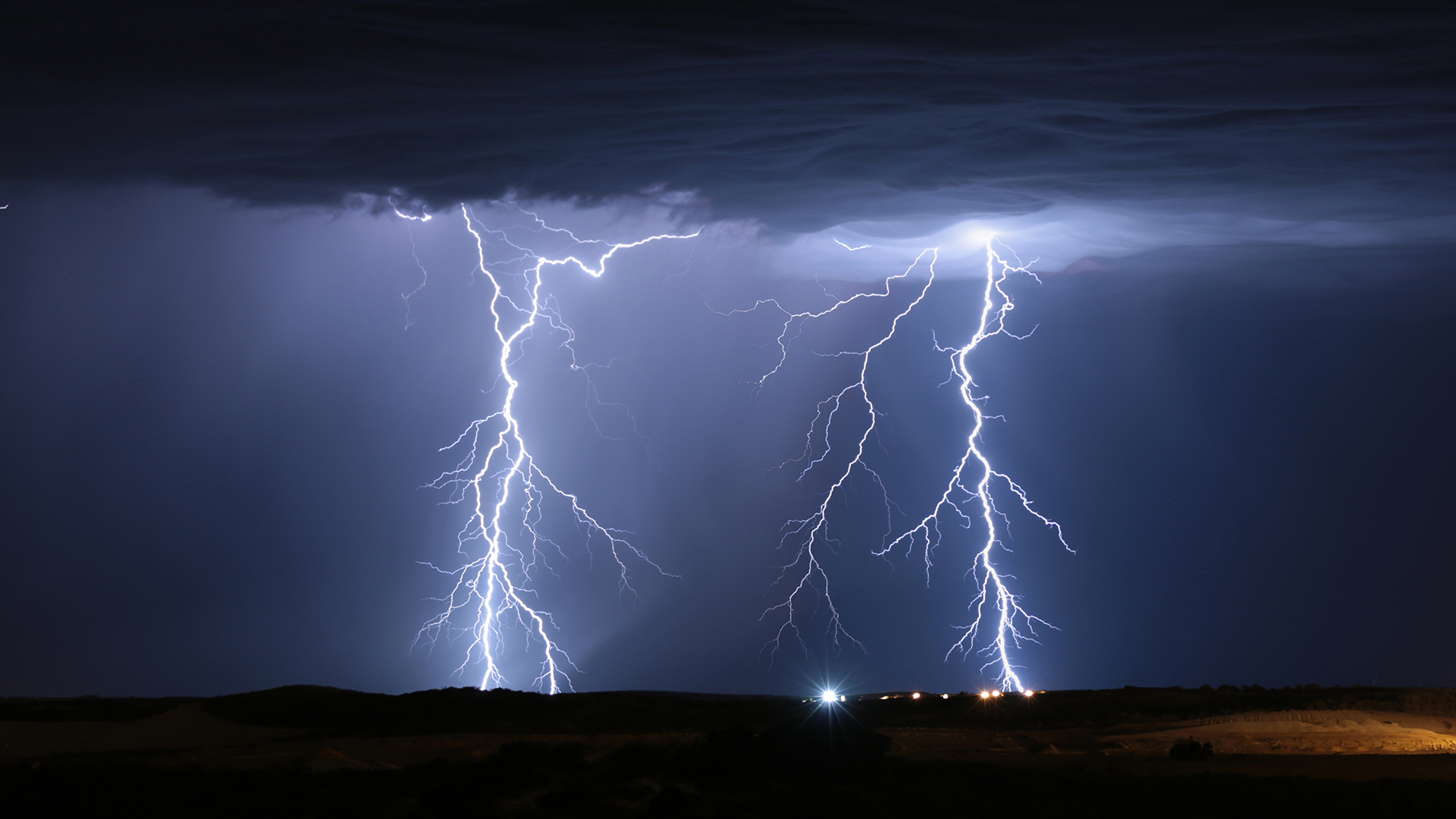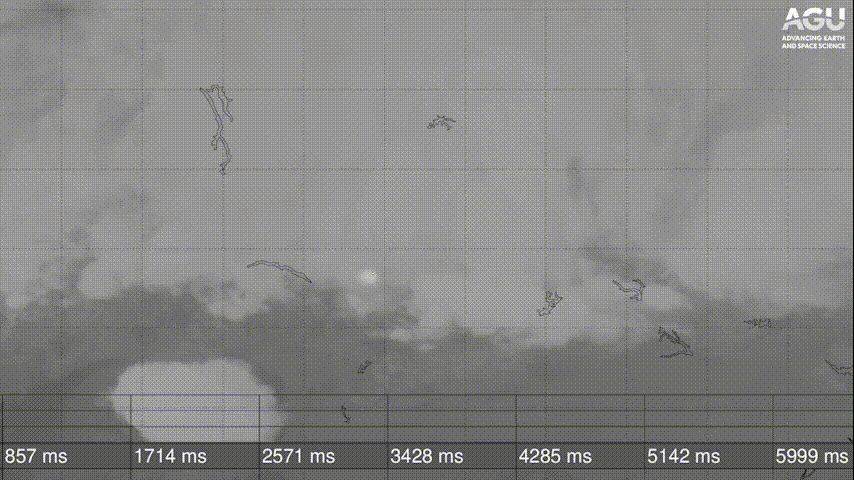'Superbolts' are real, and they flash up to 1,000 times brighter than regular lightning
Satellite data revealed millions of superbolts over the Americas between 2018 and 2020.

Superbolts — flashes of lightning that are up to 1,000 times brighter than average — really do exist, two new studies confirm.
A landmark study coined the term in the 1970s, but in the intervening years, experts questioned if superbolts are genuinely brighter than most other lightning, or if they simply appear brighter depending on the angle of the satellite observation.
Recently, after evaluating years of data, scientists confirmed these ultrabright bolts can produce at least 100 gigawatts of power (to put that into perspective, the power produced by all the solar panels and wind turbines in the United States in 2018 was about 163 gigawatts, according to the U.S. Department of Energy).
The researchers also discovered that much like comic-book superheroes, superbolts have an unusual origin story. Lightning forms when electrical charges in clouds and on the ground interact, and in most of these events the clouds are negatively charged. However, superbolts form during rare cloud-to-ground interactions in which the clouds are positively charged, the scientists reported.
Related: How big can lightning get?
Superbolts were first described as lightning flashes that were "over 100 times more intense than typical lightning," according to a study published in 1977 in the Journal of Geophysical Research. Lightning data for that study came from observations by Vela satellites, which were launched in 1969 to detect nuclear explosions from space, and operated until 1979, according to NASA.
Vela's instruments recorded thousands of lightning strikes per year, including superbolts that struck around the world, "with most frequent occurrence over the North Pacific Ocean," B. N. Turman, a researcher with the Air Force Technical Applications Center at Patrick Air Force Base in Florida, wrote in the study.
Sign up for the Live Science daily newsletter now
Get the world’s most fascinating discoveries delivered straight to your inbox.
One superbolt flash near South Africa in 1979 was so powerful that it was thought to be the detonation of a nuclear bomb, The New York Times reported that year. Another superbolt that struck Newfoundland in 1978 left "a one‐mile swath of damage" in its wake, the Times reported.
"Trees were split; television antennas were twisted beyond recognition; transformers were shattered and circuit breakers hung from power‐line poles, and there were craters in the new‐fallen snow," according to the Times.
But superbolts are also super-rare, occurring only about five times in 10 million flashes, Turman wrote in the study.

"The brightest lighting"
For the two new studies, both published on Nov. 12 in the Journal of Geophysical Research: Atmospheres, researchers again turned to satellites for superbolt observations.
The first study described the brightest lightning flashes over the Americas, recorded between 2018 and 2020 by a sensor called the Geostationary Lightning Mapper (GLM) mounted on the Geostationary Operational Environmental Satellites – R Series (GOES-R).
"We focused on superbolts that are substantially brighter than normal lightning — at least 100 times more energetic — and then looked at the top pulses above that threshold, with the top cases even going beyond 1,000 times brighter," said Michael Peterson, lead author on both studies and a remote-sensing researcher at Los Alamos National Laboratory in New Mexico.
In the second study, scientists analyzed data collected from 1997 to 2010 by the Fast On‐Orbit Recording of Transient Events (FORTE) satellite. They learned that certain viewing conditions did affect lightning brightness — when the satellite's view was unobstructed by clouds, a bolt could appear somewhat brighter — and some suspected superbolt observations did fall into that category, the study authors reported. However, those circumstances "are only a problem for the dimmer cases near the minimum superbolt threshold," and real superbolts were significantly brighter than that, Peterson told Live Science in an email.
GLM and FORTE are both optical instruments, but they measure slightly different aspects of lightning pulses, Peterson said. FORTE recorded "instantaneous peak power" of the superbolts — the moment they were at their brightest. By comparison, GLM measured superbolts' total energy over a 2-microsecond period. That might not seem like very long, "but it is for lightning, where much of the activity happens at microsecond scales," Peterson said.
The scientists found that superbolts could emanate from electrical pulses between clouds, as well as from cloud-to-ground pulses. Superbolts that appeared over the ocean were fueled by the gradual buildup of electrical charges in the stormclouds, so it wasn't surprising that bolts would be more powerful when all that electricity was eventually released, according to the study.
The brightest superbolts tended to cluster in geographic regions where large thunderstorms are common, and superbolt appearance was associated with "long-horizontal lightning flashes that can span hundreds of kilometers, which have been recently termed 'megaflashes,'" Peterson said. These new findings could help scientists to better understand the scenarios that can shape these unusually powerful strikes.
"It turns out that these flashes are exceptional in all of their characteristics — not just their size," he said.
Originally published on Live Science.

Mindy Weisberger is an editor at Scholastic and a former Live Science channel editor and senior writer. She has reported on general science, covering climate change, paleontology, biology and space. Mindy studied film at Columbia University; prior to Live Science she produced, wrote and directed media for the American Museum of Natural History in New York City. Her videos about dinosaurs, astrophysics, biodiversity and evolution appear in museums and science centers worldwide, earning awards such as the CINE Golden Eagle and the Communicator Award of Excellence. Her writing has also appeared in Scientific American, The Washington Post and How It Works Magazine. Her book "Rise of the Zombie Bugs: The Surprising Science of Parasitic Mind Control" will be published in spring 2025 by Johns Hopkins University Press.









